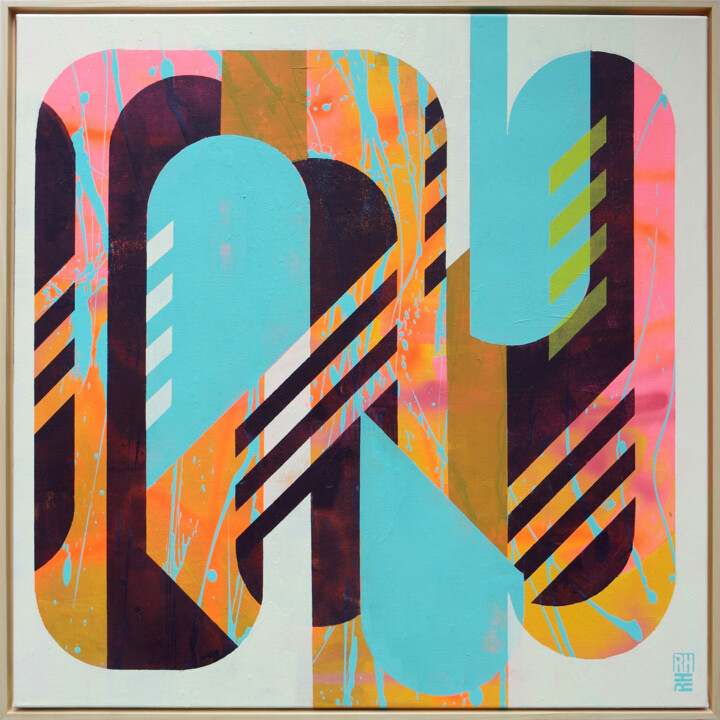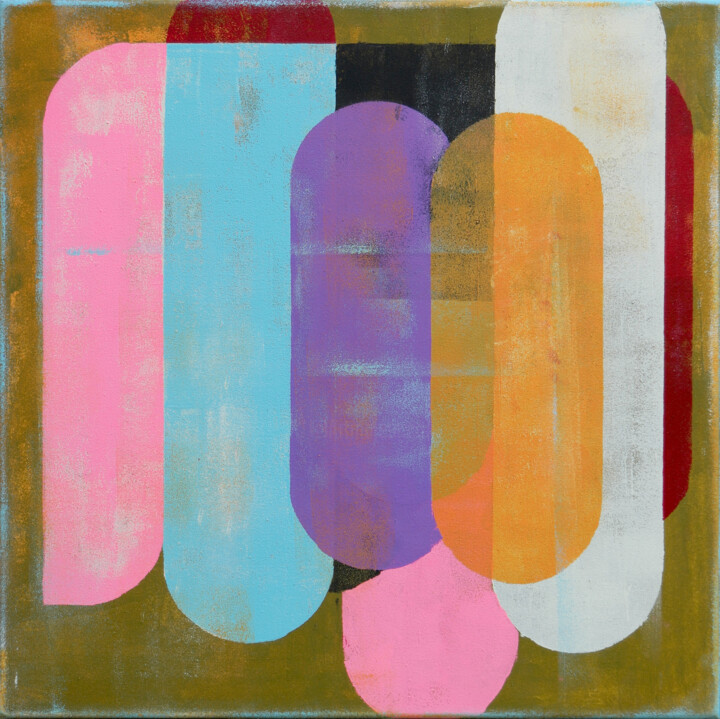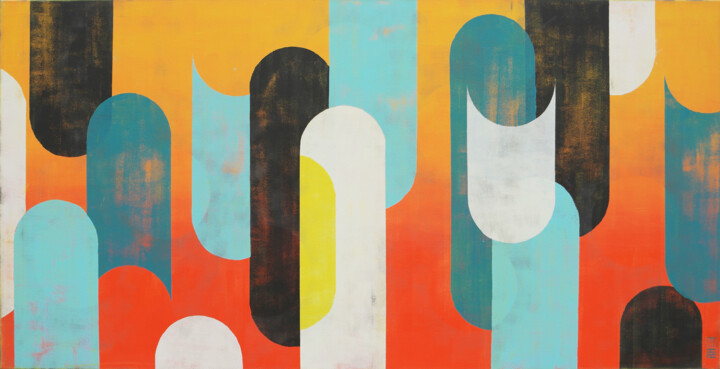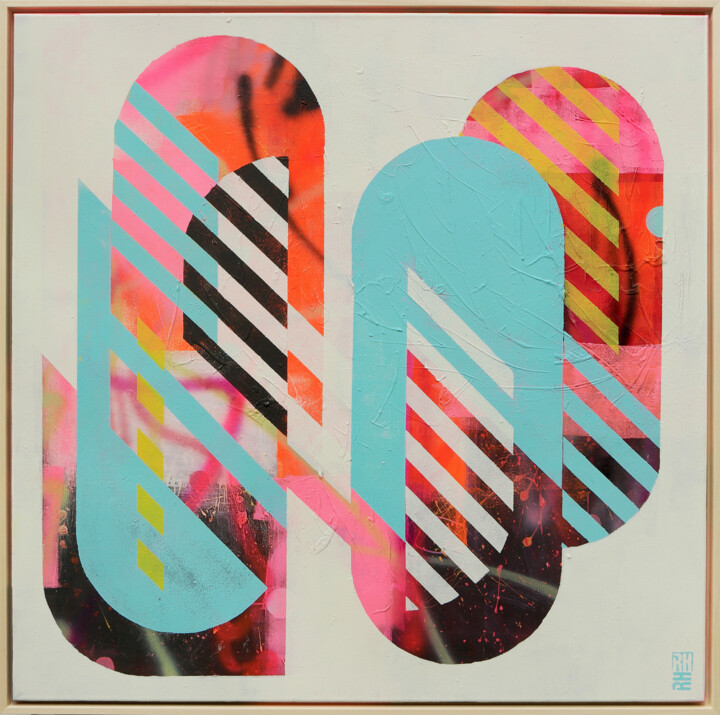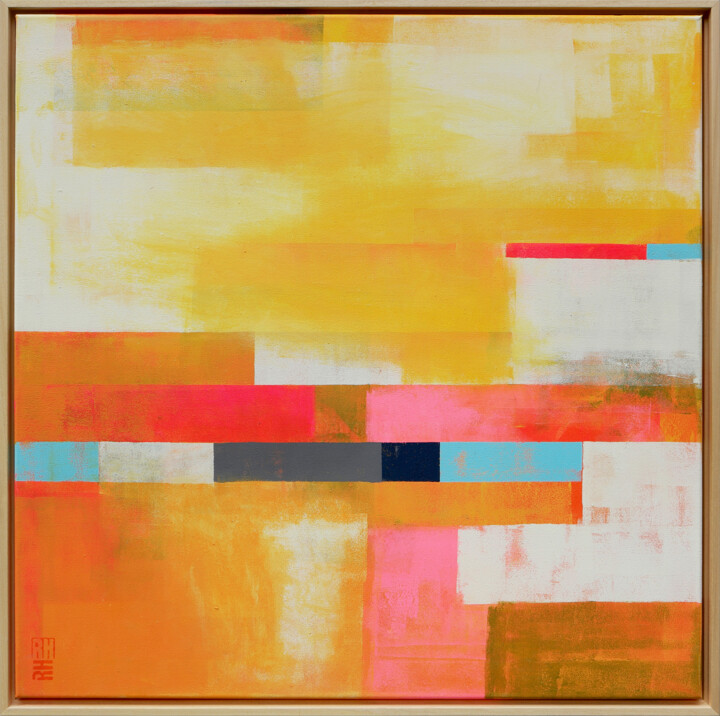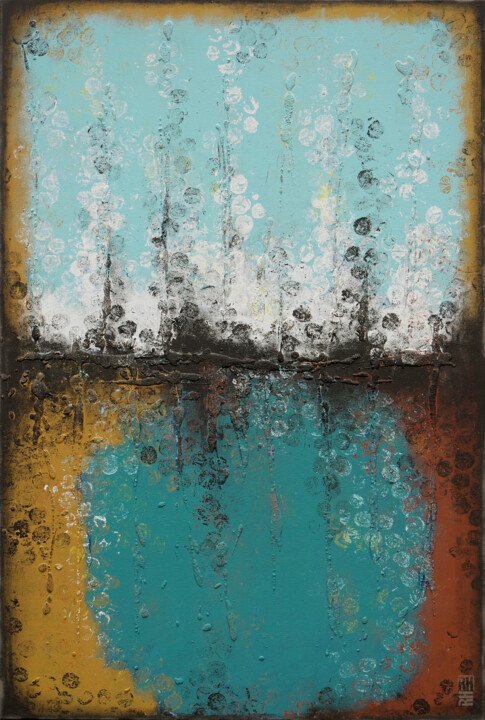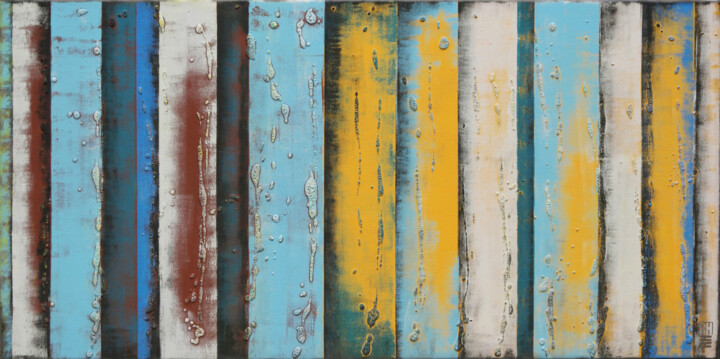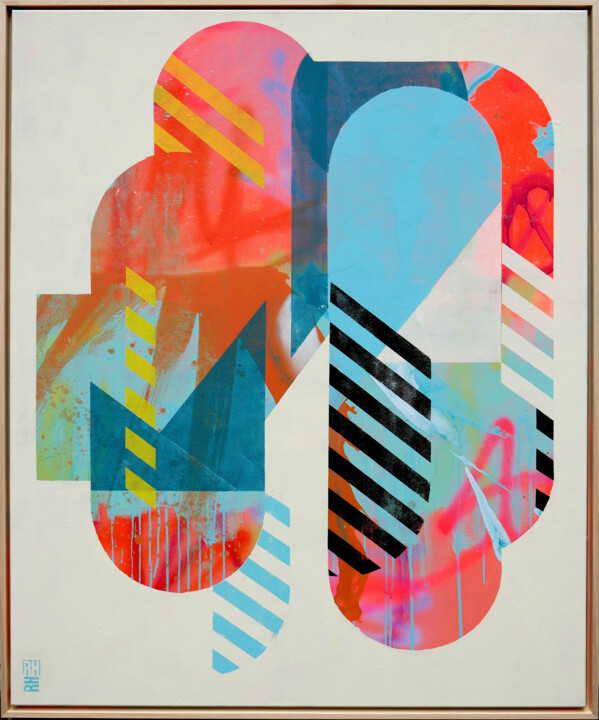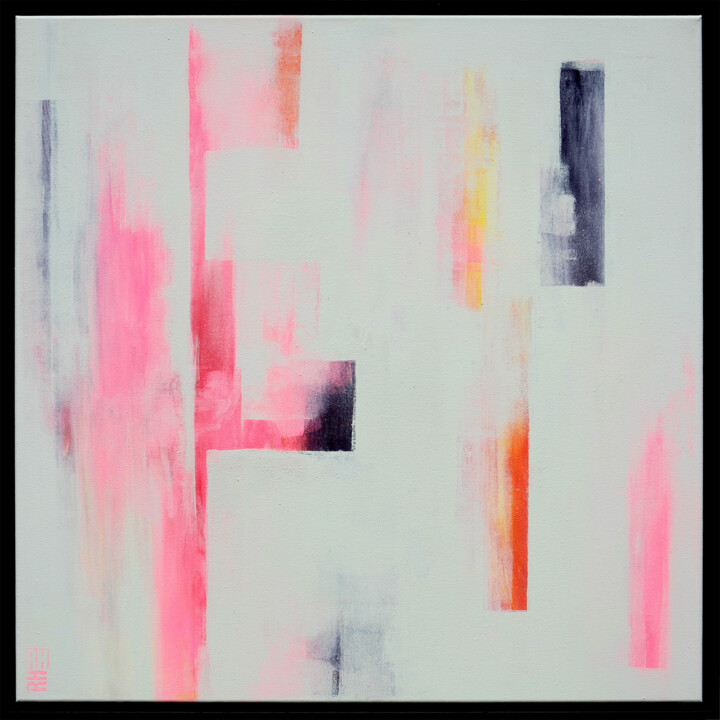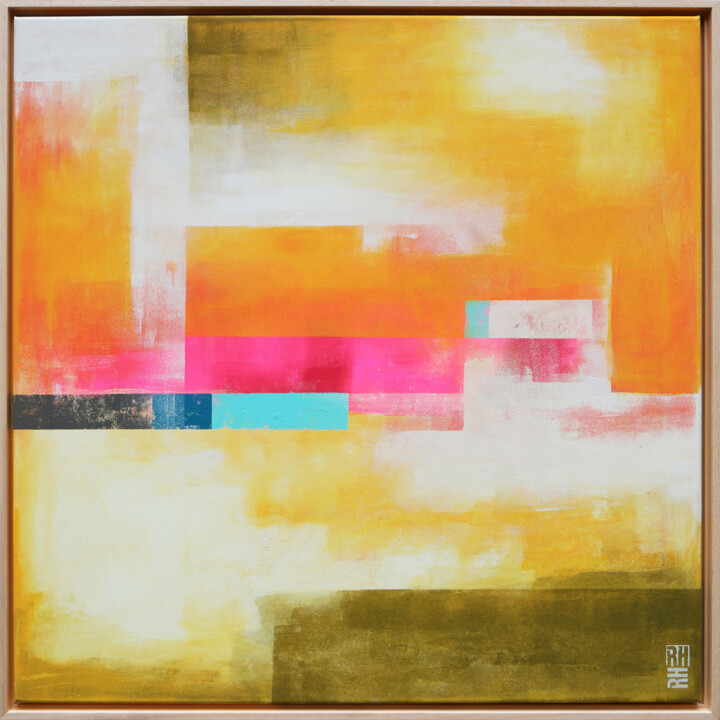What inspired you to create art and become an artist? (events, feelings, experiences...)
I worked as a graphic designer for many years and always harbored the desire to create a product that I could sell online. My interests ranged from furniture and accessories to clothing, even to a lingerie line. Throughout all that time, I was involved in painting, but the idea of turning it into a profitable business never occurred to me. Over time, however, I began to recognize the potential. Despite some considering me crazy, 11 years ago I made the decision to sell my art independently online. I set up a room in my house as a studio and started from there.
Realizing my own product and bringing it to market has always been my dream, whether it was self-designed furniture, clothing, or even another utility object. Eventually, I chose painting, but it could just as well have been something else, like interior decoration or clothing.
What is your artistic background, the techniques, and subjects you have experimented with so far?
I completed my education at the art academy and then worked for many years as a graphic designer. This period has influenced and enriched my artistry in various ways. The graphic world taught me to work quickly and be flexible, as designs often need to be quickly adapted to the wishes of clients. The ability to let go of designs I was proud of but didn't meet the client's expectations has shaped my approach. This taught me not only to follow my own vision but also to pay attention to what art buyers are drawn to. The ultimate goal is for people to hang my art on their walls with pleasure.
My artistic style is characterized by a certain freshness in the use of color and layering. I use acrylic paint, a medium that dries quickly and allows me to easily build layers on top of each other. This technique enables me to add depth and complexity to my works. Each painting tells a story, not only through my personal artistic expression but also through the interaction with the viewer. My art is more than just aesthetic; it's meant to create an emotional connection and enrich the space in which it's displayed with vibrancy and meaning.
What are the 3 aspects that distinguish you from other artists, making your work unique?
The diversity of my work. Many artists choose a specific style and focus on it throughout their careers. For me, it's different. I'm constantly searching for new images and designs for my paintings. Embracing one type of style throughout my career feels limiting; my artistic journey is characterized by a continuous urge to explore new paths and innovate.
I consider myself more of an inventor than just an artist. With each new creation, I strive to discover a fresh style, meaning my work encompasses a varied palette of artistic expressions. My approach is a continual quest for undiscovered possibilities and challenges. In fact, you could say I'm blazing my own trail rather than sticking to a fixed pattern. My use of different techniques gives me the freedom to constantly innovate and explore new horizons within the art world.

Where does your inspiration come from?
Mostly not from painting but rather from graphic design, films, and fashion.
What is your artistic approach? What visions, sensations, or feelings do you aim to evoke in the viewer?
The meaning of my art I leave entirely to the viewer. What they see in it, what emotions it evokes in them, is central. My personal vision is just one facet of the whole and plays a subordinate role; after all, it is the audience who views the works and interacts with them.
I prefer to convey a positive feeling or energy with my work. When creating my paintings, I consider the idea that they are not only artistic expressions but can also form a functional element. The goal is for my art to effortlessly integrate into different interiors. Some works are designed to be striking, to form a visual focal point, while others are intended to harmoniously blend into the environment, subtly enhancing the space.
In this way, I strive to provide a versatile experience, where my art not only aesthetically stimulates but also embraces the space in which it is placed. It is an invitation to the viewer to discover their own personal meaning and enjoy the diversity of emotions that my art may evoke.
What is the process of creating your works? Spontaneous or with a long preparation process (technical, inspiration from art classics, or otherwise)?
In my creative process, I usually have a certain feeling in mind that I want to convey. Sometimes I lean towards a more controlled and graphic approach, while at other times I opt for a freer expression. However, what the final result will be often remains unknown. The entire creative process revolves around observation: I create something, adjust it, and observe the effect it has on the whole. Therefore, artistry is a continuous exercise in looking, seeing what emerges, and of course, perhaps most importantly, knowing when to stop, when the work can be considered complete.
My approach is often intuitive but grounded in certain basic principles that serve as my compass during the creative process. These principles provide me with a form of guidance. I have specific ideas about how light and dark interact and how lines come together. These principles are clearly visible in my pop art portraits, where I am fascinated by how the manipulation of lines transforms the facial image. My goal is for people to not only experience the entirety of the image but also appreciate the interplay of colors, shapes, and the character of the portrait.
Do you use a particular working technique? If so, could you explain it?
Every art style I create has its own technique. Sometimes I work with texture, stencils, rollers, brushes, and so on... Lately, I've also been experimenting with (screen) printing techniques.
Are there innovative aspects in your work? Can you tell us about them?
In my creative evolution, new styles always arise based on previous experiments. About two years ago, I introduced a style I call 'Traffic'; a playful interplay of shapes sliding past each other. This intriguing dynamism consistently results in new compositions and also offers a wide spectrum of possibilities for various color combinations. What started as an exploratory venture into 'Traffic' has led to the creation of other engaging series, including 'Circle in Circle,' 'Traffic Full Color,' and 'Icon.'
Each new series builds upon the discoveries and challenges of the previous, resulting in an organic development. 'Circle in Circle' explores the harmony and interaction of circular patterns, while 'Traffic Full Color' further investigates and expands upon the vibrant and rich palettes of 'Traffic.' The 'Icon' series takes a unique turn by focusing on symbolic imagery with a quirky aesthetic.
This process of continuous exploration and expansion allows me to unveil new facets of my artistic expression and continue my creative journey, with each series forming a new chapter that builds upon the inspiration of the past.
Do you have a preferred format or medium you're most familiar with? If so, why?
No, I'm fine with all formats, but the larger, the more impressive I find it myself. Although I prefer to create studies in smaller formats first.
As for the medium for my painting, I exclusively use acrylic paint because it dries quickly and aligns with my way of working intuitively.
Where do you produce your works? At home, in a shared workshop, or in your own studio? And how do you organize your creative work in this space?
In my own studio, located on the first floor, I bring my ideas to life. Here, I have the freedom to explore and develop my artistic vision. My studio serves as a personal workspace where I take the time to delve into my creative process.
On the ground floor is my modest gallery, a place where my completed works tell their own story. It's an intimate space where visitors can experience my creations.
Within my studio, I enjoy organization, where each item has its own place. This orderly aspect helps me maintain structure and efficiency. However, during the actual creative process, I consciously embrace a form of 'organized chaos.' It forms a dynamic balance between order and creative freedom, which is essential for my artistic expression.
Does your work lead you to travel to meet new collectors, for fairs, or exhibitions? If so, what does it bring you?
Sharing my work online is an aspect that brings me a lot of satisfaction. It allows me to share my creations with the world, and it offers people the opportunity to explore my artworks calmly and at their own pace. Additionally, I'm always excited about collaborations with other artists and entrepreneurs. Recently, I had the chance to participate in an inspiring exhibition, and currently, I'm collaborating with an entrepreneur on organizing more art activities. These collaborations add an extra dimension to my artistic journey and offer new perspectives on my work.
A special experience was having a Pop-up store at Rotterdam Central Station. Here, my entrepreneurship really came to fruition. It gave me the opportunity to present my art in a personal and direct way to the public. Compared to participating in fairs, where the distance to the audience is sometimes greater, this direct interaction felt like an enriching experience. Undertaking such initiatives better aligns with my artistic vision and gives me the opportunity to share my art in an accessible way and engage in conversation with people.
How do you envision the evolution of your work and your career as an artist in the future?
My artistic creations are intended for a broad audience, and I believe it's important to remain accessible to a diverse group of people. It's my intention to create art that resonates with various backgrounds and perspectives. Maintaining this accessibility is crucial to me because I believe art is a powerful tool for connecting people.
While I already have many ideas for new work, the challenge lies mainly in the available time to develop these ideas into full-fledged artworks. The creative process requires carefulness and dedication, and finding the balance between my artistic aspirations and the reality of time and dedication is an ongoing challenge.
What is the theme, style, or technique of your latest artistic production?
Graphic shapes, bright and contrasting colors.
Can you tell us about your most significant fair experience?
Years ago, I participated in the Affordable Art Fair in Amsterdam, which was a great success. I sold a lot of work at that time. Furthermore, as mentioned, I haven't had much fair experience in recent years; I tend to look for other forms of exhibitions and promotion.
If you could have created a famous work from art history, which one would you choose? And why?
I'll step into the world of cinema for a moment; I would have liked to have created all the works of director Stanley Kubrick. In every respect, he was a genius, and each film is unique; he reinvented himself every time. This ultimately resulted in a masterpiece in every film genre.
If you could invite a famous artist (dead or alive) to dinner, who would it be? How would you suggest spending the evening?
I prefer to spend my time with my family and friends rather than with the deceased or the unknown. Besides, they say: 'never meet your idol' 😊.

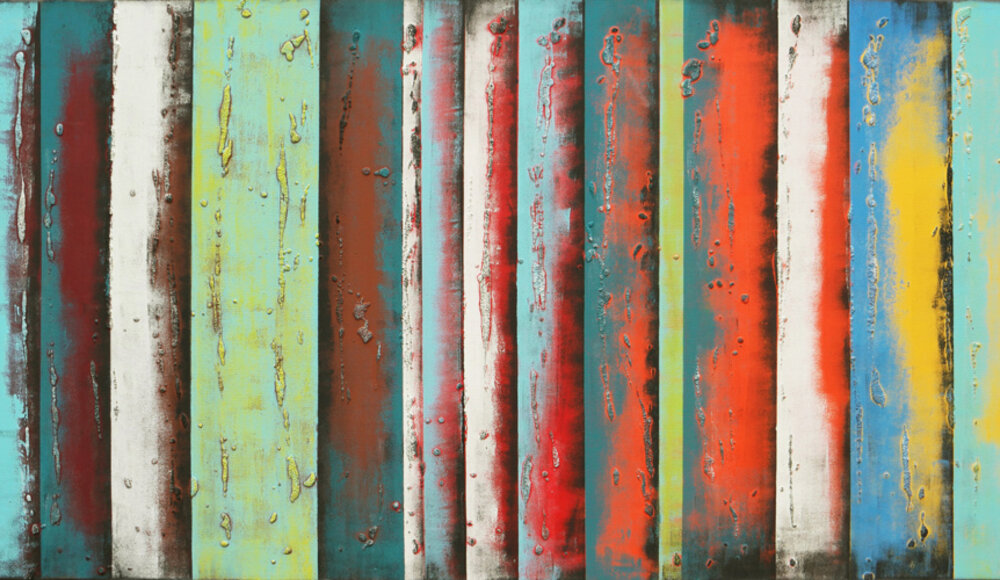



 Olimpia Gaia Martinelli
Olimpia Gaia Martinelli


